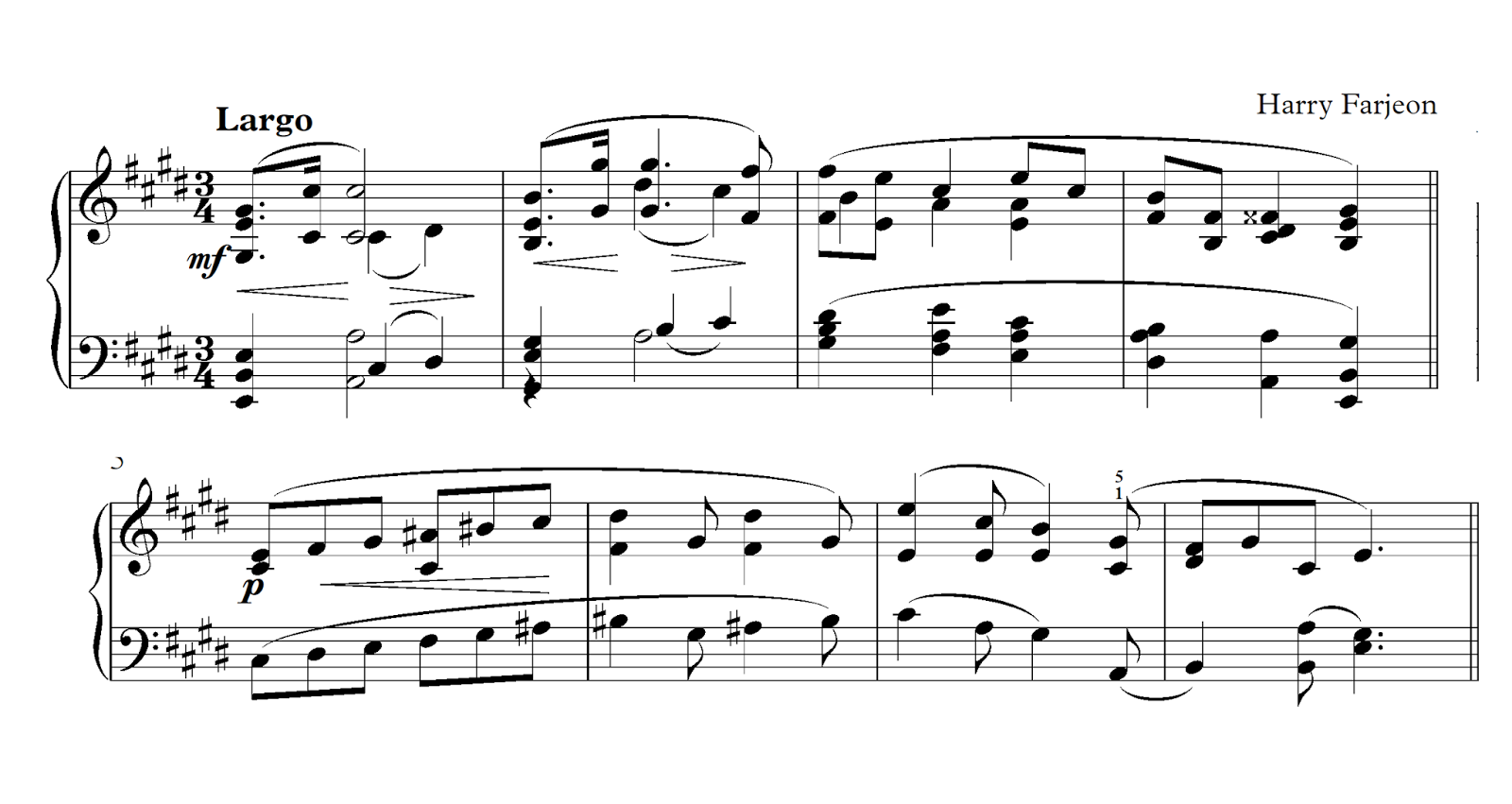There are three major scales that
call for all the pianoforte black keys and each of these scales has two names,
B and C flat, F sharp and G flat, C sharp and D flat. They are not really
identical, though they have to be expressed in the same way on the piano.
Looked at from the piano point of view, there are just the three scales, and in
these some of you will have found this special difficulty; to remember which are the white keys – not the black
ones, for these are all used.
Remembering the Black Keys
Now, how are we to remember which
are the white keys in the scales of B, F# and Db? Each of these scales has 5
blacks and 2 whites, and it is easy to get confused.
B Major. The black notes are in groups of 2 and 3. As soon as each
group is over play the semitone above; the next
white key. After D#, E; after A#, B.
Db Major. For this, do the opposite. Before each black group play the semitone below. Before Gb, F;
before Db, C.
F# Major. For this scale, concentrate upon the group of 3 black
keys. When approaching and leaving
each black group play the semitone. Before F#, E#; after A#, B.
Trying Prescriptions
We are now almost ready, but not
quite, to tackle our exercises. I want to first point out to you a curious
fact, or rather, I want to lead you to notice it for yourselves. Play a major
and a minor Common Chord on every one of the twelve piano keys – the twelve
making an octave. (It is from these chords, of course, that we get our ordinary
arpeggios). Play them simply in three-note form: C. E. G; then C, Eb, G; C#,
E#, G#, and so on, each major followed by its Tonic Minor. That will make
twenty-four chords altogether’ twelve major and twelve minor.
Now notice where the black keys
come, and where the white. White, white,
white; white, black, white; black, white, black – here are the
prescriptions for the first three.
C Major: White, white, white; yes, we have it again, often: G major, A minor
– lots of them. C Minor: White, black,
white; like F minor and others. C# Major: Black, white, black; at once we get it again in C# minor. In fact
we….. but try them all yourself! J
…… And we find that the only ones
that are quite by themselves, each standing alone and not being repeated, are
all the B’s: B major, B minor, Bb major and Bb minor.
The Music Examples
Example 1. I begin once
more with a scale, and I have put it in that rare and delightful time 9/8. This
scale is rather less attractive, I regret to say, but at least it is not
common. Remember that it is well to play each new kind of scale in all the old
keys.
The chords at the end are our
good old friends Subdominant, Tonic and
Dominant, but with different notes in
the Treble.
Example 2. is in the
style of one of the exercises I gave in Part I, the right hand having all the
black keys and then all the whites. Only two white ones left.
Example 3. Arpeggios,
tossed about from hand to hand, as it were. This example brings in the five
chief chords in the key, and is therefore a very useful one to transpose. Next
in importance to the Tonic, Dominant and Subdominant come the Submediant and
Supertonic, and you will find these all here. Really, I strongly urge you to
transpose this, both as it stands and as plain chords without arpeggio.
Example 4. This, and the
next two are more in the nature of pieces. 3/2 is another rather unusual time.
Example 5. I put this one
in to show you what terrific accidentals there can be among the chromatic notes
of B major. :-D
Example 6. Just one in G#
minor, for completeness’ sake. I’m really not going to bother much about the
worst ruffians among the minor keys - they are so seldom admitted to any
sort of society. A# minor and D# minor I intend to simply ignore, unless my
heart softens to them (or hardens to you). But this one bit in G# minor we may
have, just to get used to Fx (F double sharp), which is the least villainous of
all the double sharps. :-)


























